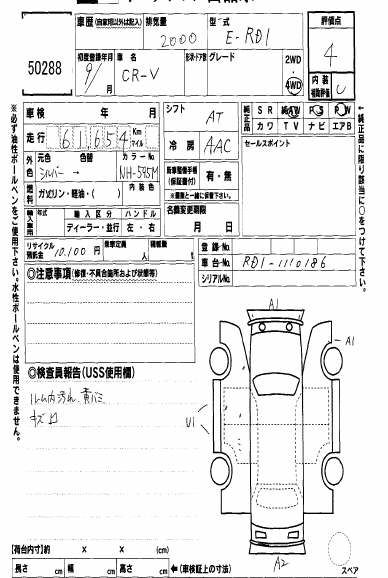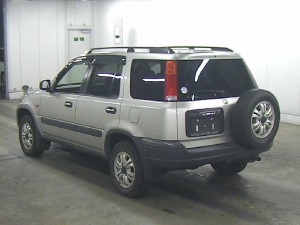Japanese Car Icons: The Honda CR-V
You may not think of the CR-V as a Japanese car icon, but when it was introduced in Japan back in 1995, it was a pioneer of the compact SUV segment.
Few cars combine everything you’re looking for into one package, but the Honda CR-V has always been one such car. As a family-friendly small SUV with appealing features at an affordable price, it can be summed up in two words: versatile and varied.
Read on to learn more about what characterizes the Honda CR-V and what makes it stand out.
History of the Honda CR-V
The car was first introduced in Japan in 1995 as Honda’s first in-house designed SUV. In fact, it can probably lay claim to being one of the first compact SUVs – a leader in a segment that seems to be ubiquitous in many markets.
Hiroyuki Kawase designed the first model of this car, which Honda began manufacturing in 1997. Since then, several theories have come about to explain what the “CR-V” stands for. “Comfortable Runabout Vehicle” is what you see in early promotional materials, but also “Compact Recreational Vehicle”, and “Civic Recreational Vehicle” have all been suggested. Whatever its official title, the Honda CR-V is currently on its fourth generation, with a new model released each year and major changes made every several years.
The first generation of Honda CR-Vs featured two types of trim levels: LX and EX, with the major difference being that the EX trim offered anti-lock brakes and larger wheels while LX did not. Furthermore, the design included rear seats that could be folded down and a picnic table that was stowed in the rear floor area. The Honda CR-V received a facelift between 1999 and 2001, which boosted the engine’s power and introduced new safety features such as an improved front bumper.
The second generation CR-V was fully redesigned from the first, and based its model off of the seventh generation Honda Civic. A new engine and chassis formed the bulk of the changes from the first generation, as well as an overall more streamlined appearance. As a result, Car and Driver magazine named the second generation Honda CR-V the Best Small SUV for 2002 and 2003. A 2005 facelift changed the appearance of the grille and added enlarged wheels, and introduced XM Satellite Radio to the interior of the car.
The third generation CR-V, launched in 2006, was designed to be lower, wider, and shorter than the previous CR-V models. To make this happen, this generation stowed the spare tire inside instead of attaching it to the back, decreasing the overall length of the vehicle. A newer, five-speed automatic transmission was introduced and mandatory transmission was completely phased out in order to implement a better MPG rating and smoother shifting. Internal features of the third generation CR-V included integrated navigation, voice activated control, a six-disc CD player, a rear backup camera, and an iPod dock. As a result, the Honda CR-V became one of the ten best selling vehicles of 2007. Style, powertrain, and equipment changes were introduced in 2009 for the 2010 model year as well.
The fourth and current generation was introduced at the Orange County International Auto Show and the Los Angeles Auto Show in 2011, and went on sale later that year. The new redesign features devices such as continuously variable transmission (CVT), suspension shock absorbers, springs, anti-roll bars and lower control arms to improve smoothness and decrease the chances of having an accident while driving. During Super Bowl XLVI, Honda promoted the new CR-V with an endorsement from actor Matthew Broderick of Ferris Bueller’s Day Off fame.
Features of the Honda CR-V
The Honda CR-V is known for having the following features and benefits:
1. Size
As a “compact SUV”, the CR-V is both large enough to meet the needs of a family and small enough to be driven and parked comfortably. The car can seat up to five people and thus works whether your family includes one, two, three or more other people; it also has plenty of storage space to fit in everyone’s belongings. At the same time, you’ll never have trouble fitting into a parking space or feel like the vehicle is too cumbersome.
2. Price
The CR-V is reasonably priced and as a compact SUV you will find you get more car for your money (as well as 4WD safety) for the kind of money you used to have to pay for a family sedan.
Where Honda has been overtaken in the compact SUV segment is in the areas of style and exclusivity. Land Rover’s Range Rover Evoque and Porsche’s Macan easily beat the bland CR-V in this department, illustrating a problem bedeviling many Japanese manufacturers – how to translate underlying quality into the surface style and panache that commands premium prices.
Early Grade 4 RD-1 CR-V at auction in Japan
Let’s take a look at one of those early first generation RD1-type CR-Vs and see what you can get for your money at auction in Japan.
This one has only 61,654 KM on the clock, even though was first put on the road in 1997. Let’s have a look at the translation of the auction inspection report:
“Grade 4, interior grade C, first registered 1997 (month not stated), two litre engine, four-wheel-drive, AT, AAC, original alloy wheels, power steering, power windows, interior grime and yellowing, scratches and dents, marks as per map”
As you can see, this CR-V may be almost 20 years old, but it is in remarkably good condition. (Although this kind of condition and mileage even lower than this is not at all uncommon among cars that are being auctioned in Japan.) According to our online system, the estimated market value of this car at auction here in Japan is around 60,000 JPY.
Interested in getting a CR-V like this one, or a later model? We can help you source them from Japan’s car auctions and ship them to you. Why not sign up for 14 days of guest access through our website here to see the cars that are available?






